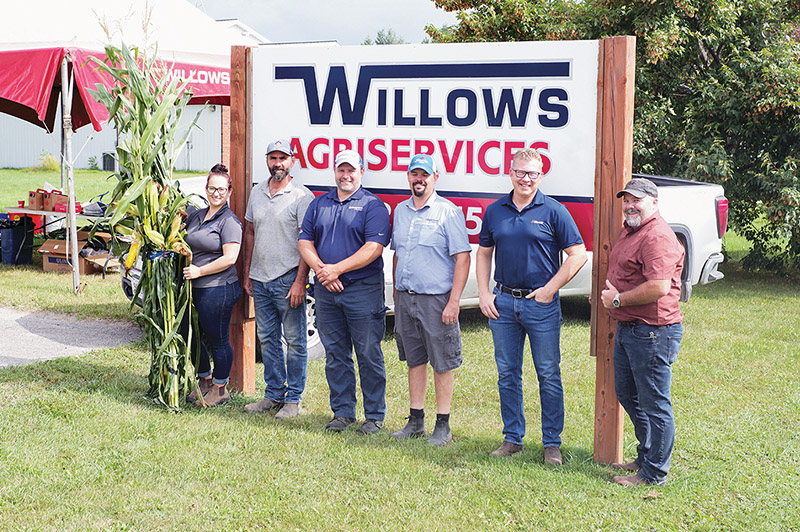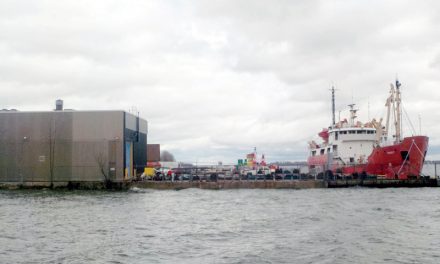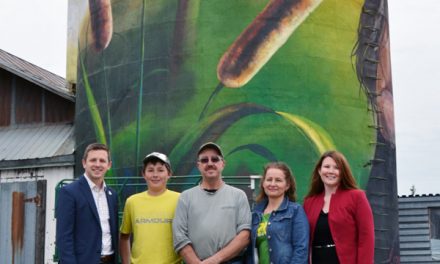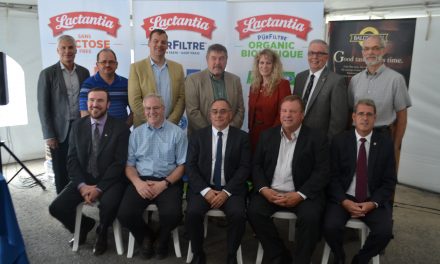Many hands make for light work, and that was certainly the case during Silage Days at Willow Agriservices Ltd. in Kemptville. From left: Brittany Hill (Willows), Jan Broeders (Willows), Patrice Vincent (Masterfeeds), Kurtis Black (Masterfeeds), Eldon Petherick (Alltech Canada), and Rob O’Connor (Willows). Tinkess Photo
By Terry Tinkess
AgriNews Staff Writer
KINGSTON – There are many good companies out there, so to set yourself apart, you need to find a way to offer your customers something extra whenever you can. Willows Agriservices Ltd. in Kemptville is a company that makes a habit of this.
Heading into the harvest season, Willows held their 2023 Silage Days on Sept. 7 in Kemptville at their 9 Industrial Road location and on Sept. 8 at 3560 Wilton Road in Harrowsmith, north of Kingston.
According to Brittany Hill, a ruminant nutrition advisor at Willows, knowing the optimal time to harvest is key, which is why they offer this event. “Essentially we put this on because most people don’t have the option to try some stocks on their own at home to get an accurate moisture reading on when to harvest for the best potential,” said Hill. “Like when we’re talking corn silage, feed for cows or sheep or whatever, we’re just trying to help them. They bring us six to eight of their corn stalks from throughout their field. We put it through this chipper and then we determine how far away from harvest it would be for optimal, depending on what you’re storing it in and based on moisture content and maturity of the cob.”
It’s a fairly simple process. You bring in six to eight stalks (not the headlands; take them from throughout the field) and the staff at Willows will run them through the chipper and capture the chipped and chopped stalks in a bucket. That’s where the technology comes in.
Eldon Petherick is a dairy management consultant with Alltech Canada. When he attends an event like Silage Days, he comes armed with an NIR instrument. NIR stands for Near Infra-Red.
“The machine is portable,” said Petherick. “It uses near infrared technology to analyze the ingredient for nutrients and moisture. We’ll see how much moisture is in the total sample, how much protein, starch, and fibre. The NIR is basically set up on a calibration, so you need to keep that calibration updated and accurate. As you’re doing testing, you’re going to get a fairly accurate result on what you’re testing. It’s specific to an individual ingredient, so what we’re testing today is corn silage. There will be a specific equation set up within that technology for that individual ingredient and then over time updated with different samples.
“For example, if we were doing sorghum silage, we would need to build a database with multiple samples of sorghum together to set up the proper calibration. It makes a big difference over knowing when exactly they’re trying to take your crop off, and that’s the value of doing these events, is that you’re trying to predict optimal maturity to get that at the right moisture, but also to get the right nutrient content in order to get the most nutrients out of the crop.”
The entire process for each person who brought their stalks in for testing didn’t take very long, but it was long enough to enjoy a coffee and baked goods provided by Willows and catch up how things are progressing in 2023. In agriculture, moreso than many industries, sharing information and experience is not only allowed, but also encouraged.













